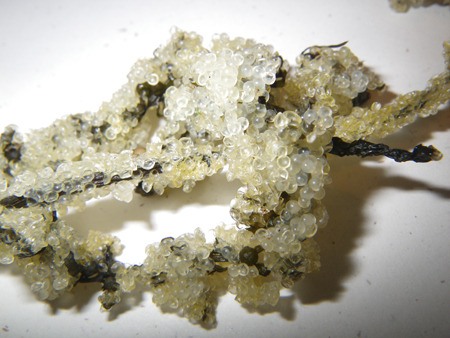Once upon a time, the islands’ shallow bays teemed with spawning herring in late winter and spring. Herring were abundant enough to be “raked” out of the water. Their crunchy eggs, covering seaweeds and eel grass, were even more prized than their freshly grilled, salted or pickled oily flesh.
People were not alone in their taste for island herring. Seabirds timed migration and nesting to coincide with the massive spring herring spawn. Richer in oil and calories than smelt or sandlance, young herring two to three inches long were ideal for nestlings. After seabirds ate their fill in April and May, juvenile Chinook and Coho salmon arrived from rivers and deltas on the mainland, and feasted on the remaining young herring from June to August. Herring were an attraction for seals and porpoises as well.
Commercial exploitation of island herring increased dramatically after the Second World War, intensifying in the 1960s when Puget Sound salmon harvests were already in decline. The herring fleet converged on spawning aggregations, seining the concentrated mass of adults and damaging the vegetation and eggs. By the 1980s, herring spawning in the islands had fallen sharply and become sporadic, scattered and unpredictable. Despite restrictions on fishing, island herring have been slow to recover.
The largest remaining herring population in the North Sound, centered at Cherry Point on the mainland, spawns later than island herring. By the time Cherry Point herring reach the islands in their seaward annual migration, they are too late for nesting seabirds, and a bit large for the juvenile salmon that remain in the islands through late summer and early fall. Our research shows that juvenile Chinook eat much better (more total biomass and more calories) in years when there is more island herring spawning, such as 2011.
One of the major losers has been the Federally-listed Marbled Murrelet. These small seabirds nest in dense old forests in the Cascades and the Olympic Peninsula, but forage in the Sound, flying round trips as long as 40 miles back to their nestlings. The largest concentration of foraging Marbled Murrelets in the Sound is on the south end of Lopez. Over the past 30 years, these birds have had to switch from herring to sandlance as their main diet, which many biologists believe is a significant factor in their decline.
We were heartened to see a large spawn-out of herring in East Sound last April. It may be a sign that herring are recovering. If you see what appears to be a large patch of milk in the water this spring, let us know (468-2808 or kwiaht@gmail.com). You may be witnessing the rebirth of island herring!




